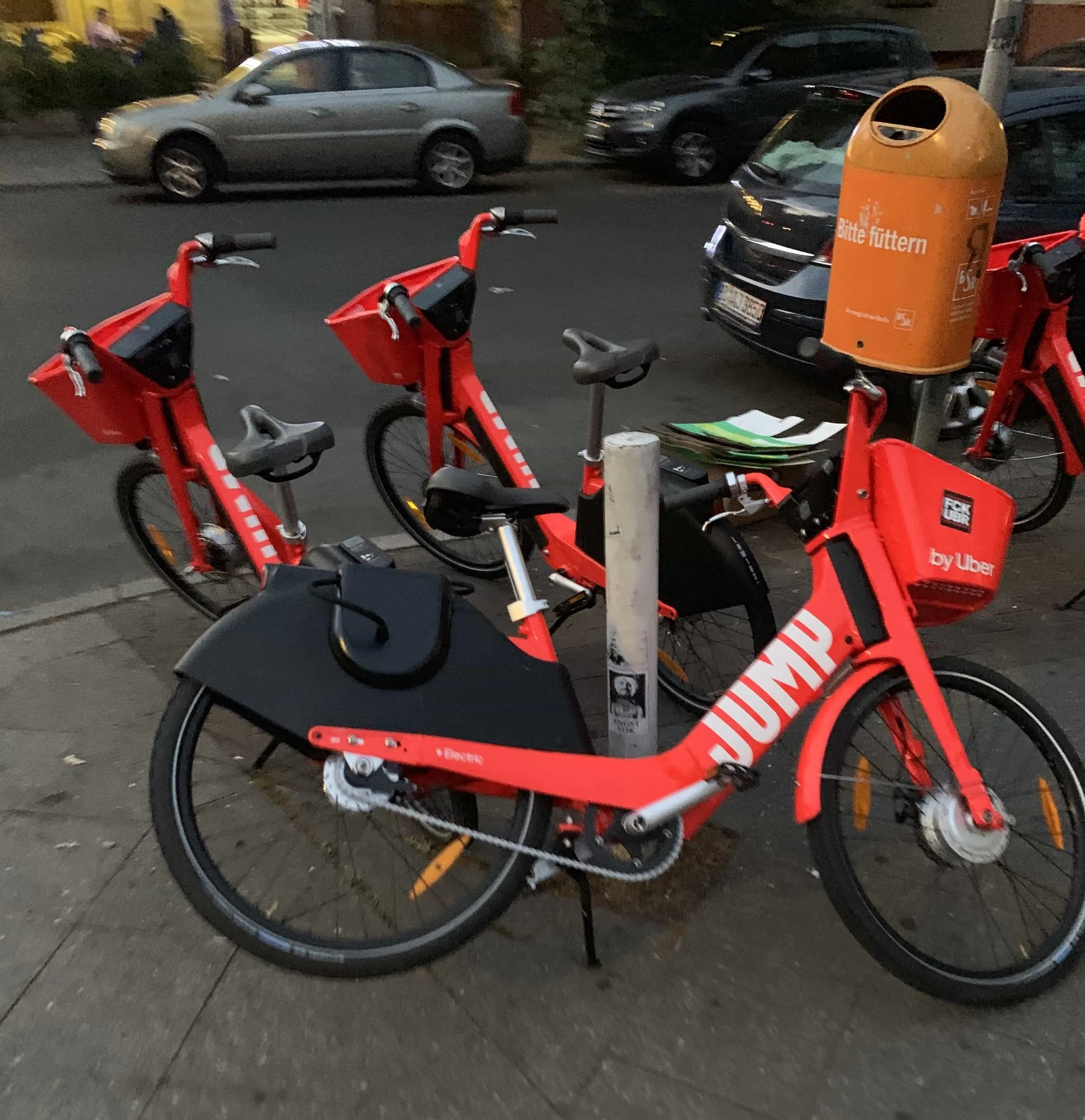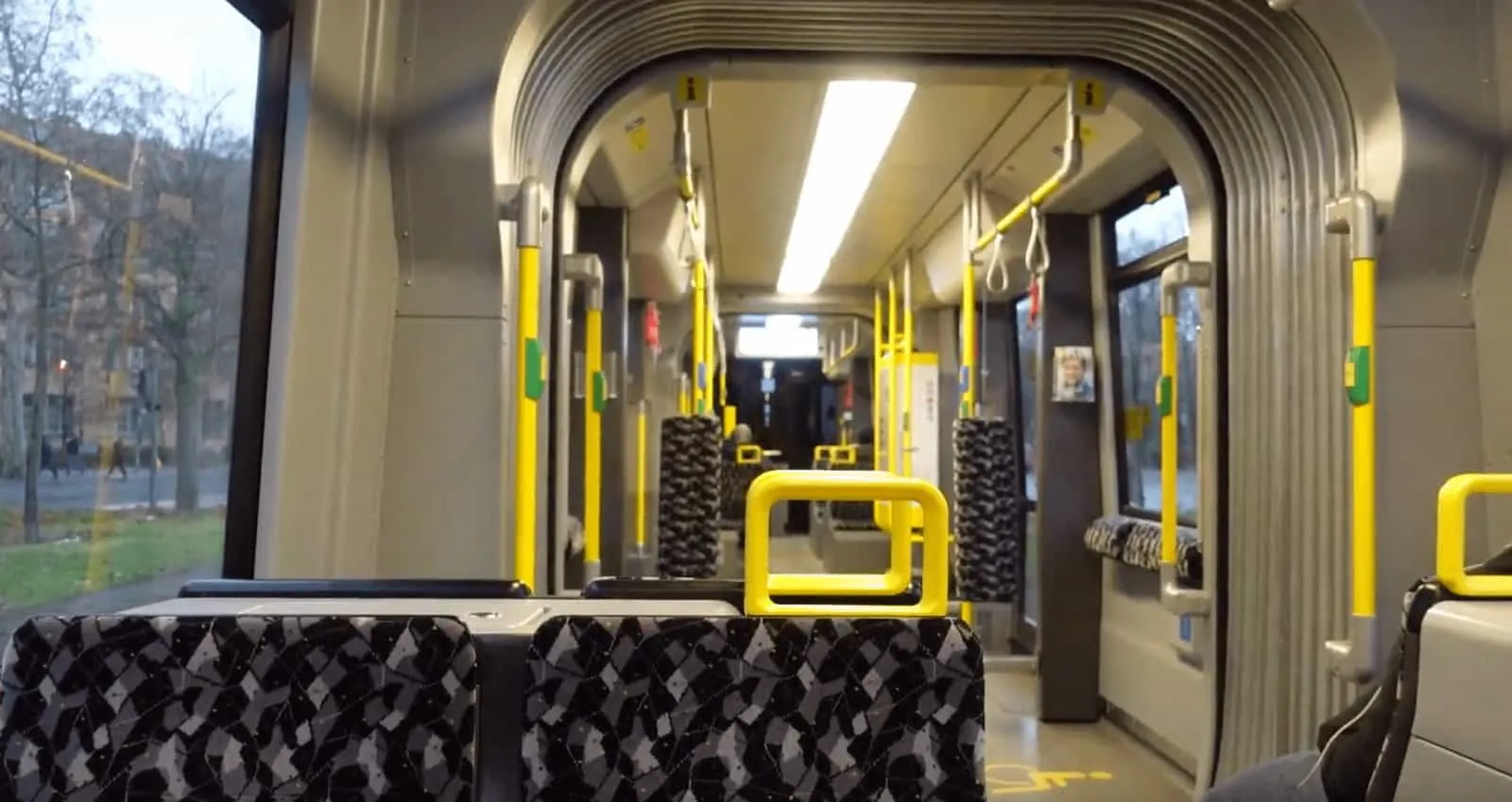Did you know that Berlin was ranked 3rd globally for sustainability in 2017? This is no surprise since we know that Germany gives a lot of emphasis to Sustainable Transport. The Federal Ministry for Economic Cooperation and Development has even released a comprehensive guide called “Discover Berlin by Sustainable Transport”!
Environmentally Sustainable Transport (EST) is the need of the hour in every country. Lucky for us, Germany and especially Berlin, has several of these ESTs we can choose from.
Public transport
A major factor that contributes to sustainable modes of transport in Germany is the public transport system. Germany has a highly efficient, high-quality, fairly priced, and well-coordinated public transport system with various options which give a viable alternative to car use.
70% of all trips in Berlin are made by public transport, bike or by walking. Public transport is of key importance for mobility in Berlin. Did you know that if the entire public transport network of Berlin were laid out in a line, it would start in Berlin and end in Moscow?
The ticket prices cover 60% of the public transport cost and the rest comes from the public budget. Almost a third of public transport users in Berlin are eligible for concessionary fares like low earners, students, senior citizens, etc.
Car sharing
For most younger people living in a city, access to a car is far more important than owning one. People that do not own a car but occasionally would like to use one can find a variety of car-sharing services in Berlin. Depending on the provider they can be picked up at car-sharing stations or even at the roadside.
In Germany, the most popular kind of car-sharing is free-floating. This means that the cars can be parked anywhere. Here are the main car share companies operating in Berlin.
ShareNow
The biggest car-sharing company in Germany at present, ShareNow is a venture between Car2Go and DriveNow which were previously owned by BMW and Mercedes respectively. Various types of vehicles from a Fiat 500 to a BMW 2 Series Convertible can be rented spontaneously or pre-booked for as little as €0.19 a minute for entry-level models. You can either book the car via the ShareNow app (15 minutes in advance of the trip) or by simply opening the car door with your app. Signing up for ShareNow costs 19€ in which 30 minutes of car sharing is already included!
SIXT Share
SIXT Share is one of the quite well-known car rental companies in Europe. They have recently entered car sharing as well and combines car-sharing and rental cars in one app. There are around 500 SIXT stations in Germany. As a welcome bonus, the first trip with SIXT Share is for free for up to 10€ trips. Every other trip will cost you 30 cents per minute or 59€ if you rent the car for the whole day.
Miles Mobility
Miles Berlin– Since this company is quite new in the car-sharing field, their cars are almost new and in good shape. With Miles Berlin, you pay by the distance that you covered rather than the time used. This is most useful during heavier traffic times as it reduces stress to make a journey in a fixed time.
Shared rides and ride-pooling
Also gaining increasing popularity are ride-pooling services such as BerlKönig and Clever Shuttle. These services pick-up passengers with small busses or vans in the inner Berlin area and drive them to their similar destinations. These can be up to 50% cheaper compared to a taxi and also reduces the overall traffic. Both of these ride-sharing services can be booked via their apps.
Electric cars
Germany is the leading market in Europe for plug-in electric car sales. Almost 600,500 electric cars were on the road in Germany as of December 2020. In the year 2019, the number of public charging points almost doubled. 15 percent of these ports are quick-charging stations.
If you own an electric car, find your nearest charging station here.
Electric car sharing
WeShare from Volkswagen offers a free-floating car-share service for only electric cars. All rides are only 19 cents per minute and it covers most of the important areas in Berlin, even well outside the Berliner S-Bahn ring. Download the WeShare app and do your bit to saving the environment.
e- Scooters
The latest form of mobility on Berlin’s streets is the e-scooter. For covering shorter distances quickly and comfortably, e-scooters are the way to go. Moreover, you do not require a motorcycle license for your rides!
The most popular e-scooter companies in Berlin are:
- Bird: With the Bird app on your phone, you can find the location of the nearest e-scooter and pay for rental as well. Unlocking costs one euro and then, each minute costs 15 cents.
- Lime-S: The quality of these scooters is found to be very good. Payment done with a credit card or Paypal, these scooters charge 1 euro to unlock and 25 cents per minute.
- Other e-scooter providers in Berlin include Circ, Tier Mobility, and Voi. Download these apps to start getting around by e-scooter!
Remember that pavements and pedestrian zones are off-limits for electric scooters.
Bike-sharing
Cars can peacefully coexist with bikes in Germany because of special bike lanes. For every 1000 residents of Berlin, there are 720 bicycles. Cycling is made much easier in Berlin due to-
- Good cycling infrastructure (650 kilometers of bike paths)
- The requirement to provide bike parking spaces for tenants
- No legal restrictions to take bikes on all public transport
- Bike rentals
An easy to use and cheap option is to rent a bike from various suppliers:
- Call a Bike– The largest bike renting operator in Berlin is “Call a Bike” from the Deutsche Bahn. You can either drop off their bikes at their bike stations or use a free-floating system that lets you drop off the bikes wherever you want at a fee of 1 euro.
The pricing system is of two types. The standard rate costs 8 cents per minute and a maximum of 9 or 15 euros a day. The flat rate allows people to cycle for 30 minutes free of charge provided you pay an annual fee. After 30 minutes there is a charge. It also lets you rent two bikes at a time.
- Nextbike– With a basic rate of 1 euro for 30 minutes followed by 1,50 euros for every additional 30 minutes, they offer one of the best rates for bike rentals. With good tires and other parts, the quality of the bikes is also very good. They also offer 3 day and weekly packages at very attractive prices.
- MoBike – MoBike offers stationless trips. They bill every 20 minutes contrary to the other bike rental companies. These bikes can also be parked anywhere.
If none of these options suit you, you can also rent a bike at Lime bikes, Fahraddstation, Donkeybike, and Listnride.
BBB Bike is an urban route planner for bike riders in Berlin. The website or app gives the best possible route to take based on where your starting point and the final destination are.
Electric bikes
For those that want to go at higher speeds but not sweat:
- Uber’s JUMP bikes are found in many locations around the city, costing ten cents a minute.
- Listnride– More than 60 bikes are available which start at a rate of 12 euros per day. Find the listing of the e-bikes available for rent in Berlin on their website.
- Lime-E– You can use the Lime app to locate the closest e-bike. You can check the battery on the app and drive with a speed limit of 14.8 mph.
Other startups in Berlin promoting sustainable transport
Park + Ride
The Park + Ride traffic venture in which parking facility for cars, motorbikes, and buses are available near public transport stops. This makes it easier to access public transport, decreases the traffic in the inner city and contributes to decreasing air pollution.
Infravelo bike
This company has plans to visibly improve the situation for cyclists with color-coded cycle paths, better instructions, and safe bicycle stands. The service provider also plans to ensure comfortable driving over longer distances of up to ten kilometers with rapid-cycle connections.
Radbahn
Radbahn plans to transform the forgotten space along Berlin’s famous U1 elevated subway line into a roofed cycleway. This is expected to create major urban thoroughfare and create a space for contemporary mobility, innovation, and leisure.
Low emission zones
Only low-emission cars with a green sticker can be driven here. In Berlin, this is the area within the S-Bahn ring. Based on your vehicle’s polluting conditions, different colored stickers are given to cars. Here is how to get your driver’s license in Germany.
Conclusion
In Germany, not only is public transport encouraged, but private vehicle transport is also kept in check with regulations and taxes. To read more about these, check our article on —.
The Mobility act in Berlin aims to create a liveable city and ensure that all road users can travel safely. Let’s make sure that we as residents contribute to this mission.











Leave a Reply